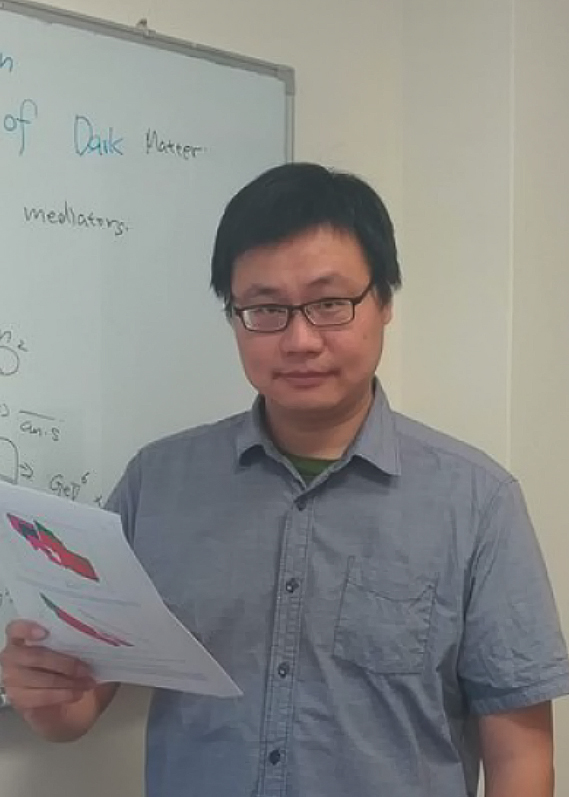USTC Astronomy Colloquium Series: 2021 Fall
Sensitivity of SKA to dark matter induced radio emission
Yue-lin Sming Tsai 副研究员
紫金山天文台
2021/10/27, 10:00am , the 19th-floor Observatory Hall

报告人:
Yue-lin Sming Tsai obtained his PhD at University of Sheffield in 2011. He is currently an associated professor in Purple Mountain Observatory. His researches focus on the phenomenological study of dark matter. He has published more than 50 papers with an H-index of 25.摘要:
Conventionally, one can constrain the dark matter (DM) interaction with DM mass heavier than GeV by searching for DM induced synchrotron emission in the radio frequency band. However, an MeV DM can also generate detectable radio emission if electrons and positrons produced by DM annihilation or decay undergoes inverse Compton scattering (ICS) with the cosmic microwave background. The upcoming radio telescope Square Kilometre Array (SKA) is designed to operate with extremely high sensitivity. We investigate the capability of the SKA to detect DM particles in a board mass range from MeV to TeV, for both annihilation and decay scenarios. In this paper, we consider the sensitivities of the future SKA first and second phase (SKA1 and SKA2). As a comprehensive study, we systematically study the impacts on the DM-induced signal computation from the magnetic field strengths and particle diffusion coefficients. We compare the detection potential of four very different sources: two dwarf spheroidal galaxies (Draco and Segue 1), one radio-poor cluster (A2199), and one DM-rich ultra-diffuse galaxy (Dragonfly 44). We project the SKA1 and SKA2 sensitivities with the exposure of 100 hours on the annihilation cross section and decay time for DM mass from MeV to TeV by considering two different leptonic final states e+e− and μ+μ−. 邮编:230026 ,
邮编:230026 ,  联系电话: 0551-63601861
联系电话: 0551-63601861 Email:
Email: